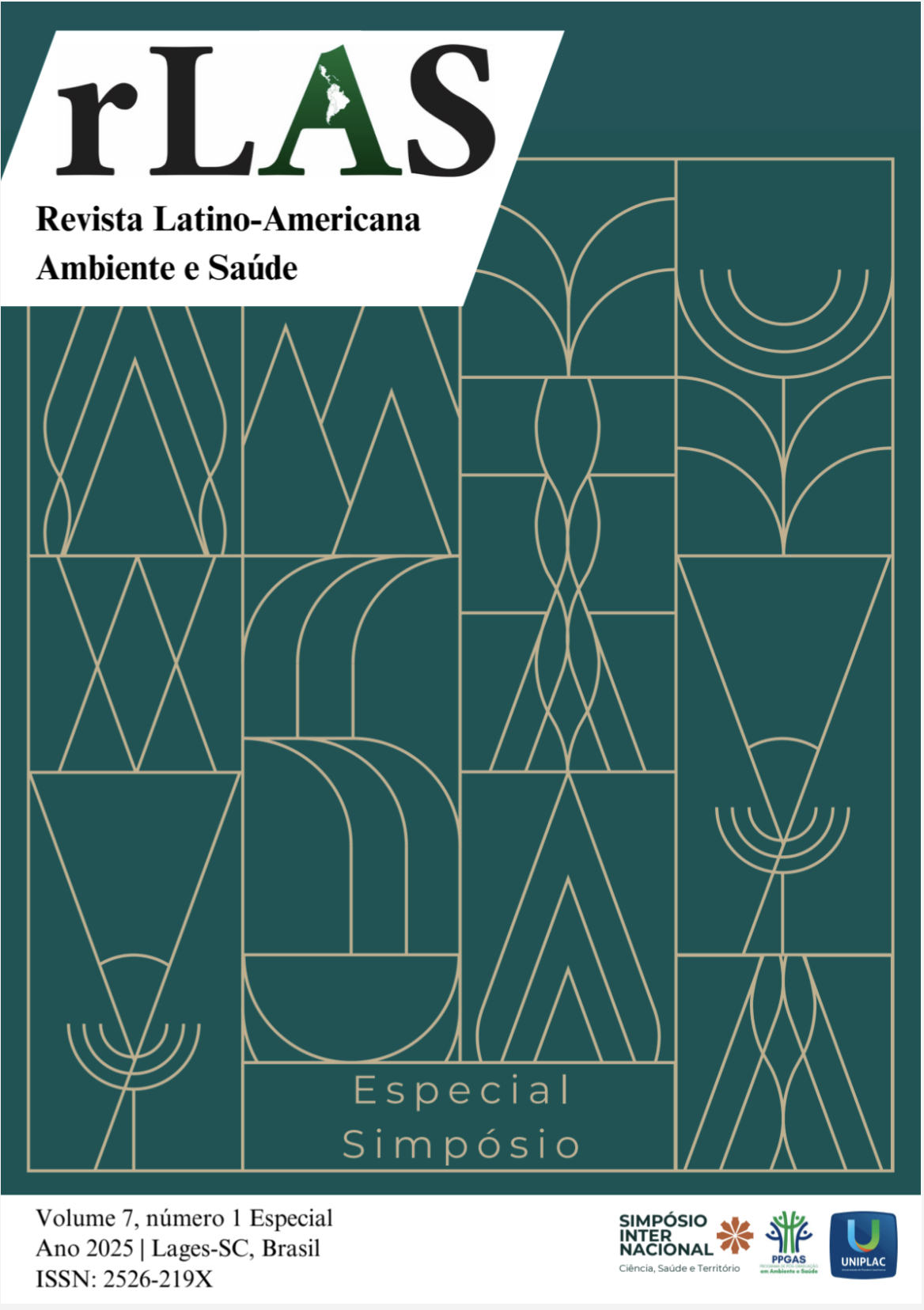Influência da pandemia de COVID-19 no comportamento sedentário mundial
Keywords:
doença viral COVID-19, inatividade física, isolamento social, pandemia, estilo de vidaAbstract
Introduction: COVID-19, characterized by its high transmissibility, necessitated the adoption of social isolation measures, leading to significant impacts on the physical and mental health of the population. The restrictions imposed by the pandemic disrupted healthy habits, resulting in increased sedentary behavior. Objective: To identify in the literature the influence of the pandemic on sedentary behavior. Methodology: A narrative literature review was conducted using the PubMed, Science Direct, and CAPES Periodicals databases. Results: The COVID-19 pandemic significantly affected the physical and mental health of the population, as well as physical activity levels and the global economy. Social isolation measures intensified sedentary behavior, leading to muscle loss and neuromuscular impairment. Additionally, economic hardships worsened quality of life, increasing unemployment and hindering the maintenance of healthy habits. These factors contributed to psychological exhaustion and a rise in symptoms of depression, anxiety, and stress. Conclusion: During the COVID-19 pandemic, sedentary behavior increased significantly. This scenario raised the risks of cardiovascular and metabolic diseases. Regular physical activity proved essential for health and quality of life. Therefore, strategies that encourage movement are crucial, even in restrictive contexts.
Keywords: COVID-19 viral disease; physical inactivity; social isolation; pandemic; lifestyle.
References
M. F.; BABAEI-POUYA, A.; POURSADEQIYAN, M. The health effects of quarantine during the COVID-19 pandemic. Work, v. 67, n. 3, p. 1-5, 2020.
BOTH, L. M. et al. COVID-19 pandemic and social distancing: economic, psychological, family, and technological effects. Trends in Psychiatry and Psychotherapy, v. 43, n. 2, 2021.
BRITO, S. B. P. et al. Pandemia da COVID-19: o maior desafio do século XXI. Revista Visa em Debate, v. 8, n. 2, p. 54-63, 2020.
CASCELLA, M. et al. Features, evaluation, and treatment of coronavirus (COVID-19). In: StatPearls. Treasure Island (FL): StatPearls Publishing, 2025.
FARIA, R. R. et al. Os seis pilares da medicina do estilo de vida no manejo de doenças não transmissíveis – as lacunas nas diretrizes atuais. Arquivos Brasileiros de Cardiologia, v.120, n. 12, 2023.
HUANG, C.Y.; HUANG, W. H., YEN, H.Y. An exploration of sedentary behavior, physical activity, and quality of life during the COVID-19 outbreak. International Journal of Public Health, v. 26, n. 68, p.1605585, 2023.
JAFARPOUR, R.; PASHANGZADEH, S.; DOWRAN, R. et al. Host factors: implications in immunopathogenesis of COVID-19. Journal of Pathology Research and Practice, v. 228, p. 153647, 2021.
JIMÉNEZ-PAVÓN, D.; CARTEGENA, J. A. L.; PRADELLA-HERNÁNDEZ, E. Physical exercise as a tool to help the immune system against COVID-19: possible benefits and limitations. European Journal of Preventive Cardiology, v. 27, n. 9, p. 884-886, 2020.
LEIVA, A. M. et al. El sedentarismo se asocia a un incremento de factores de riesgo cardiovascular y metabólicos independiente de los niveles de actividad física. Revista Médica do Chile, v. 145, v. 4, p. 458-467, 2017.
MEHTA, O. P. et al. Coronavirus disease (COVID-19): comprehensive review of clinical presentation. Frontiers in Public Health, v. 8, 2021.
MULASSO, A. et al. "Fique em casa" durante a pandemia de COVID-19: efeitos na atividade física e comportamento sedentário em uma comunidade acadêmica italiana. Revista Internacional de Pesquisa Ambiental e Saúde Pública, v. 20, n. 2, p. 1168, 2023.
NARICI, M. et al. Impacto do sedentarismo devido ao confinamento domiciliar COVID-19 na saúde neuromuscular, cardiovascular e metabólica: implicações fisiológicas e fisiopatológicas e recomendações para contramedidas físicas e nutricionais. Revista Europeia de Ciências do Esporte, v. 21, n. 4, p. 1-22, 2020.
RAJKUMAR, E. et al. The psychological impact of quarantine due to COVID-19: a systematic review of risk, protective factors and interventions using socio-ecological model framework. Heliyon, v. 8, n. 6, p. e09765, 2022.
SANCHEZ-LASTRA, M. A. et al. Estimación del aumento global del tiempo de sedentarismo durante los confinamentos de la COVID-19: una revisión sistemática y un metanálisis. Revista Española de Salud Pública, v.96, p. e202205042, 2022.
SILVA, D. R. P. et al. Changes in the prevalence of physical inactivity and sedentary behavior during COVID-19 pandemic: a survey with 39,693 Brazilian adults. Cadernos de Saúde Pública, v. 37, n. 3, 2021.
TALI, S. H. S. et al. Tools and techniques for severe acute respiratory syndrome coronavirus 2 (SARS-CoV-2)/COVID-19 detection. Clinical Microbiology Reviews, v. 34, n. 3, 2021.
XIE, Y. et al. Effects of physical activity on depression in adolescents: a systematic review and meta-analysis. BMC Public Health, v. 23, n. 1, p. 1-13, 2023.


